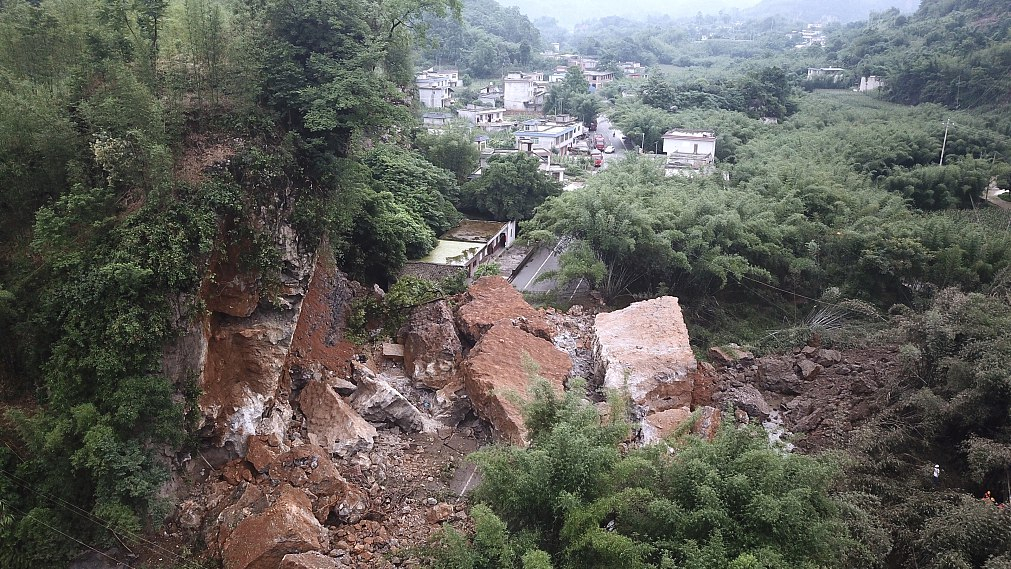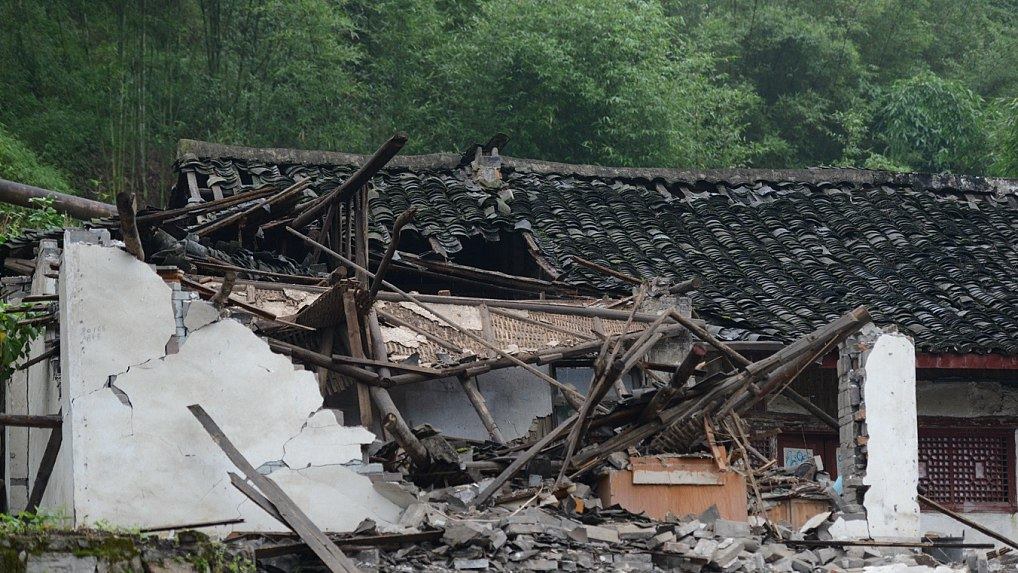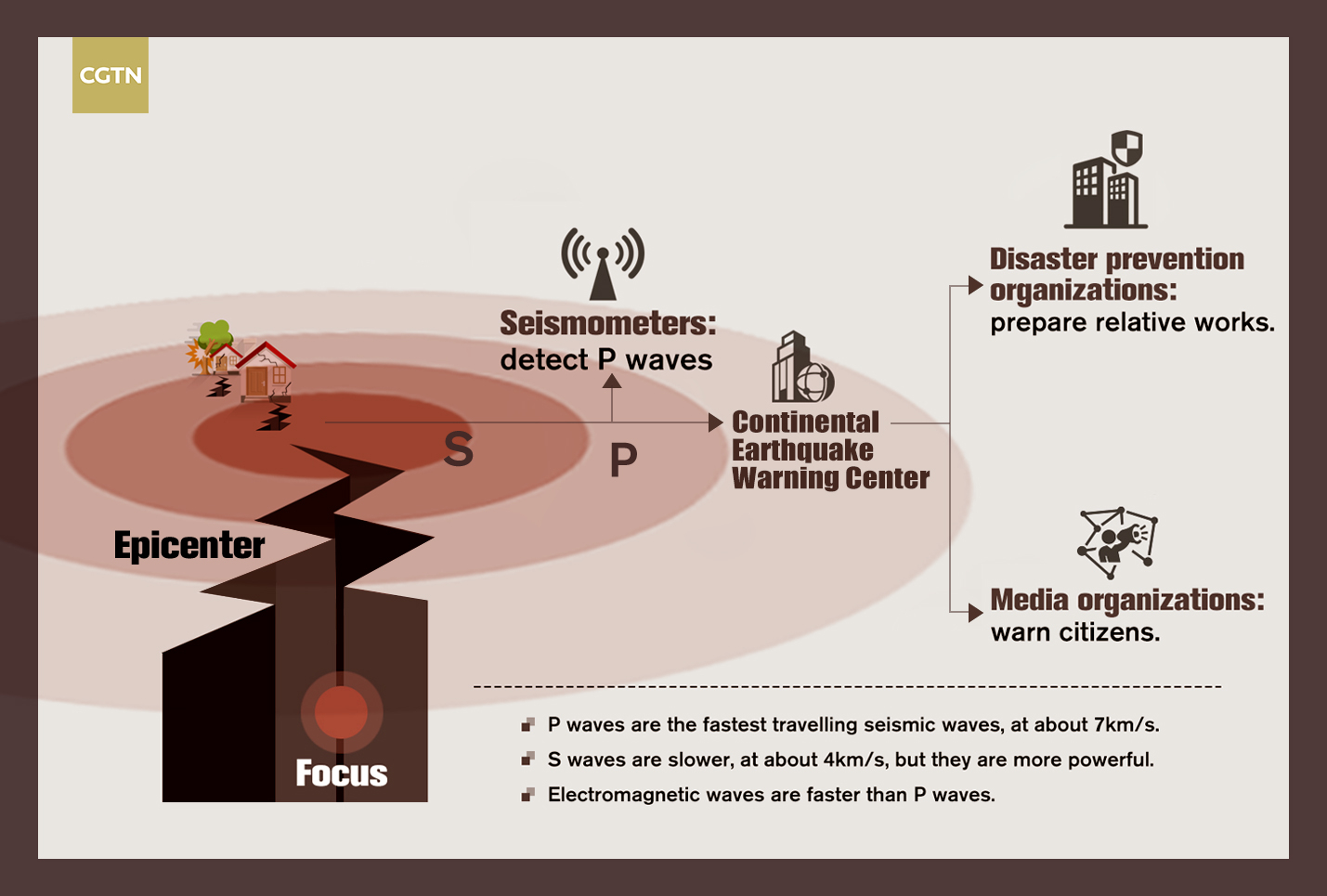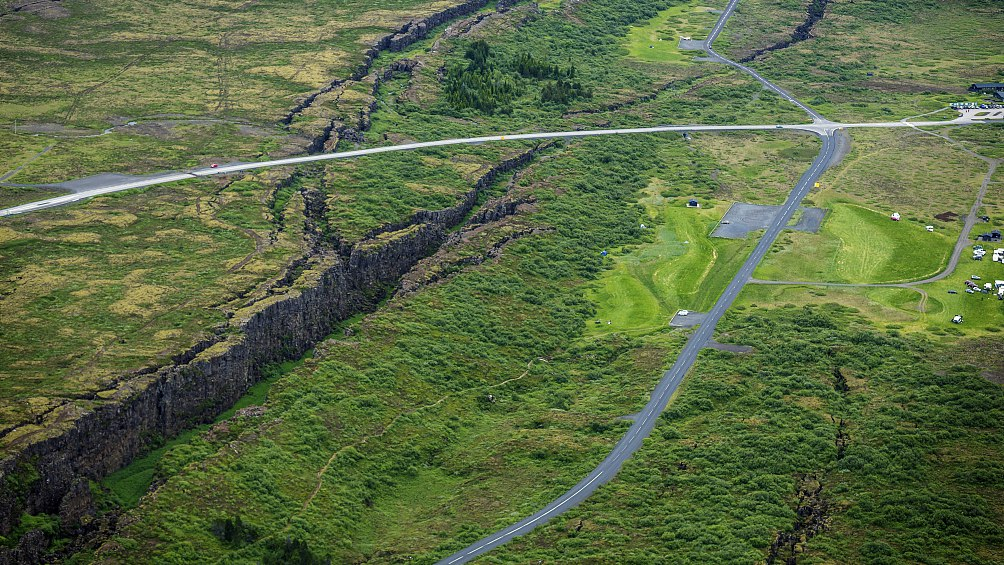
At 22:55 on June 17, 2019, a 6.0-magnitude earthquake shook Changning County of Yibin City, Sichuan Province, killing 13 people.
Thanks to the Continental Earthquake Early Warning Network, those in Chengdu received a warning 61 seconds before the earthquake. Yibin residents were warned 10 seconds in advance.

The aftermath of the quake in Changning. /VCG Photo
A consequence of human activity?
Many expressed concern that the earthquake was associated with the exploitation of shale gas and the construction of dams in the city. This theory is not yet supported by evidence.
According to the China Earthquake Networks Center, the hypocentral depth is around 16 kilometers, which is much deeper than the depth of gas exploitation activities. Therefore, it is less likely that the earthquake was caused by man-made activities.
Changning's landscape is mainly formed by multi-fractured anticlines, a structural trap formed by the folding of rock strata into an arch-like shape. Near these anticlines lie many fragmented and small fault zones which would naturally cause unstable geographical formations and suppress the plates. As the pressure accumulates, it affects the anticlines and causes earthquakes.

The aftermath of the quake in Changning. /VCG Photo
How are earthquakes detected?
Ten seconds before the earthquake struck Yibing City, which was 51 kilometers away from the epicenter, the Continental Earthquake Warning Center sent alarms to citizens' TVs and phones. And Sichuan's capital city Chengdu received the warning 61 seconds before the ground started to shake.
In natural disasters like an earthquake, a warning of a few seconds can make the difference between life and death. So how are earthquakes detected?
The idea of sending an earthquake early warning is simple, by using the fact that electronic waves are faster than seismic waves.

How does an earthquake warning system work? /CGTN Photo
First of all, scientists use seismometers to detect seismic waves. Seismic waves are waves of energy created by earthquakes which travel through the earth's layers. Those that travel through the interior of the earth are called body waves, which include P (compressional or primary) waves and S (transverse or secondary) waves.
P waves are like the lightning, and S waves are like the thunder. The P waves travel faster and can be detected earlier by the seismometers. The S waves are powerful and destructive, traveling slower than the P waves.
The electric waves used by TVs and radios are faster than S waves. By using the time lag, scientists can send general information to media outlets and disaster prevention departments to warn citizens.

The aftermath of the quake in Changning. /VCG Photo
However, sending early warnings is not the same thing as earthquake prediction. Predictions are still challenging. Earthquakes are not a one-off drill, and the causes of an earthquake are complex, resulting from both man-made and natural causes.
(Cover image via VCG)
(If you want to contribute and have specific expertise, please contact us at nature@cgtn.com)

Copyright © 2018 CGTN. Beijing ICP prepared NO.16065310-3
Copyright © 2018 CGTN. Beijing ICP prepared NO.16065310-3